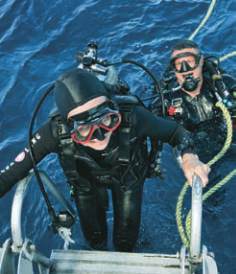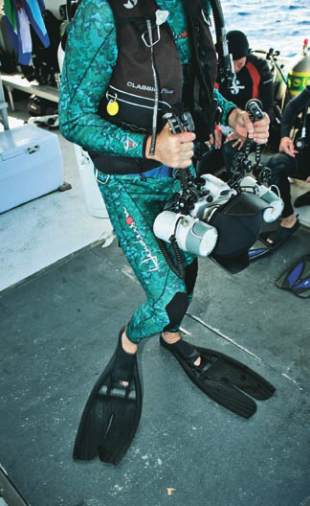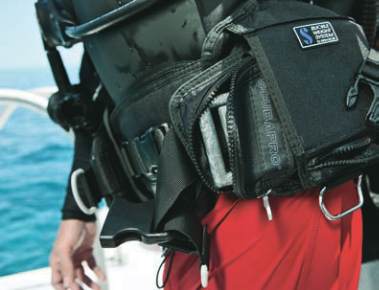Basic HTML Version





I
n my 25 years of running dive boats out of Key Largo,
Fla., I have noticed that most of the problems divers
experience fall into two categories: inattention to detail
and inadequate situational awareness.
InattentIon
Lacking attention to detail can create myriad small problems
that may escalate into a big accident. Seemingly insignificant
issues should be addressed before you ever arrive at the dive
platform. These may include adjustment of your fins or BCD
for proper fit or securing your tank to prevent it from slipping.
Even something as minor as the position of the power-inflator
hose could become a problem; route the hose assembly
correctly, and secure it where it can be reached when needed.
Every diver should be comfortable and familiar with his weight
system. Weights should be secure, evenly distributed and, most
important, ready to be quickly ditched in an emergency.
After assembling your equipment and checking it for proper
operation, stow any extra gear out of the way. This makes
for safer and easier movement around the dive deck, and it
protects your gear from damage or loss. Make sure your tank
is secured in its rack and your mask and fins are tucked away.
Many boats use bungee cords to secure tanks; always make
sure your tank and your buddy’s tank are secured whenever
they are moved. Keeping an eye on the bungee cords prevents
the brief embarrassment of trying to stand up with the tank
still restrained and the significant hazard of an unsecured tank
crashing to the deck when the boat rolls.
After your gear is checked and ready for use, please pay
attention during the safety briefing and roll call. Not only
are briefings required by the U.S. Coast Guard, they also are
designed to promote divers’ safety. Briefings often include tips
on finding the highlights of the upcoming dives and optimizing
encounters with marine life. The local knowledge of the captain
and crew won’t do you any good if you aren’t listening.
SItuatIonal awareneSS
Knowing what’s happening around you is important both
above and below the surface.
If you walk with fins on, be careful. Don’t try to lift your feet;
slide them along the deck instead. Watch out for obstructions,
and take advantage of handholds at all times. Some operators
may ask you to carry your fins until you arrive at the dive
platform. Once there, be ready to enter the water. On many
boats this means already having your mask on and your
regulator in your mouth.
On most boats you will use either a backward roll or a giant
stride to enter the water. When doing a giant stride, hold your
mask and regulator with one hand, look at the horizon, and
take one big step. No vertical jump is necessary. Before doing
T e x T b y C a p T . J o e T h o m a s / p h o T o s b y s T e p h e n F r i n k
46
|
sUmmer 2012
RESEARCH, EDUCATION & MEDICINE
//
S A F E T Y 1 0 1
Tips for Safer Boat Diving

